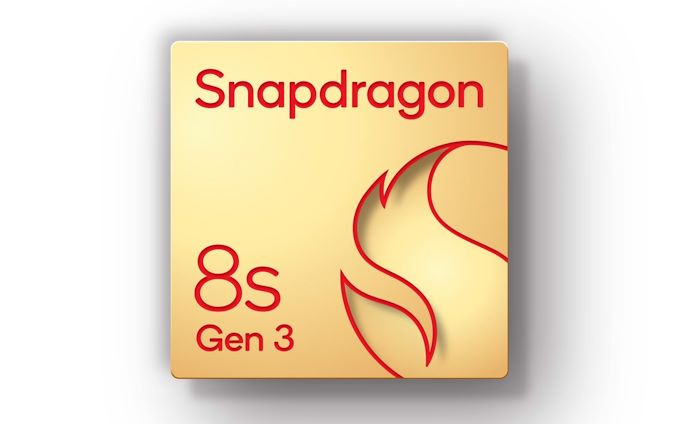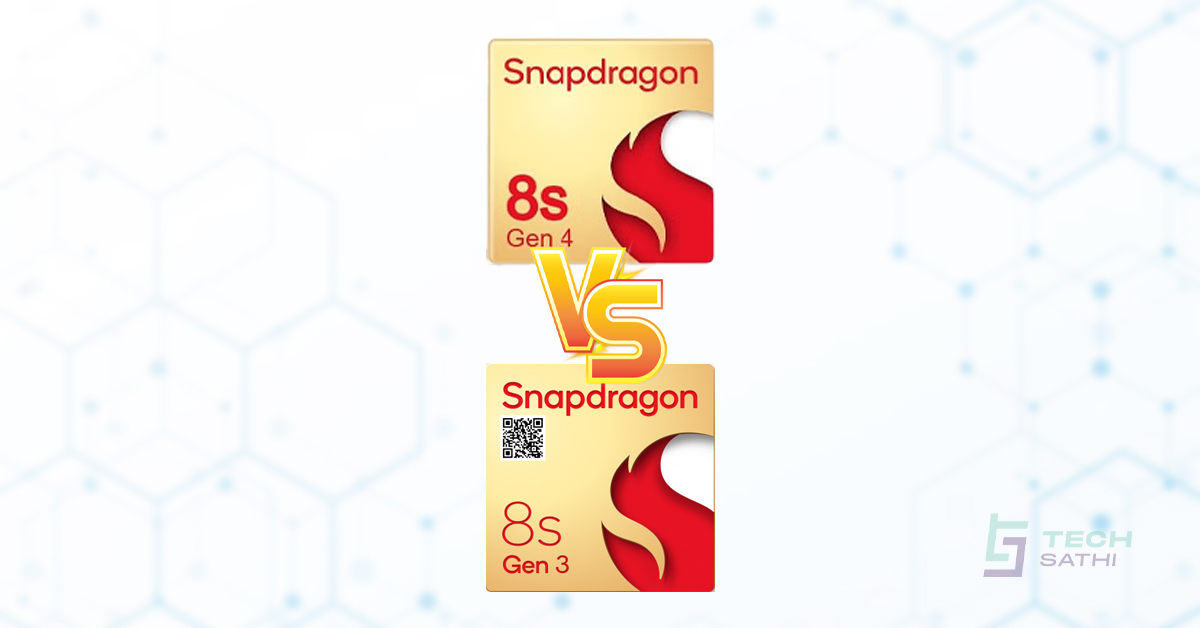Qualcomm has introduced the Snapdragon 8s Gen 4, a new upper-midrange processor designed to bridge the gap between premium and mainstream smartphones. Positioned just below the company’s flagship Elite tier, this chip continues to rely on ARM-based designs rather than Qualcomm’s in-house Oryon cores. While it may not redefine its category, the 8s Gen 4 brings several notable improvements over its predecessor, the Snapdragon 8s Gen 3. Let’s explore how these two chips compare across key areas like processing power, gaming capabilities, AI performance, camera features, and connectivity.
A Leap in Processing Power

The Snapdragon 8s Gen 4 retains the same 4nm manufacturing process as the Gen 3 but introduces significant changes to its CPU configuration. It features an octa-core setup anchored by a high-performance Cortex-X4 core clocked at 3.2GHz, a noticeable increase from the Gen 3’s 3.0GHz. Additionally, the efficiency-focused Cortex-A520 cores have been replaced entirely with Cortex-A720 cores, which are distributed across multiple clock speeds. This shift results in a 31% boost in CPU performance while consuming 39% less power compared to the previous generation.
The decision to eliminate the Cortex-A520 cores reflects Qualcomm’s focus on balancing power efficiency with enhanced multitasking capabilities. With more cores optimized for higher performance, the 8s Gen 4 is better suited for demanding applications and multitasking-heavy workloads. These upgrades make it a compelling choice for users seeking improved responsiveness without compromising battery life.
You might also like : Huawei’s Bold New Pura X Flip Phone: A Game Changer in the Foldable Market
Gaming Gets a Major Boost
Gaming enthusiasts will find plenty to appreciate in the Snapdragon 8s Gen 4. Qualcomm claims a 49% improvement in graphical performance over the Gen 3, thanks to advancements in the Adreno GPU architecture. The new GPU adopts a sliced design similar to the one found in the Snapdragon 8 Elite, enabling superior rendering and power efficiency.
The chip also supports cutting-edge gaming technologies like Game Super Resolution 2.0, which enhances visuals through 4K upscaling, and global illumination for hardware-accelerated ray tracing. While the Gen 3 also offers ray tracing, the Frame Motion Engine 2.0 in the Gen 4 doubles frame rates from 60fps to 120fps, delivering smoother gameplay. These enhancements position the Gen 4 as a strong contender for mobile gamers seeking console-like experiences on their devices.
Smarter AI and Real-Time Intelligence

Artificial intelligence takes center stage with the Snapdragon 8s Gen 4, thanks to a revamped Qualcomm AI Engine. This iteration promises a 44% improvement in AI performance, complemented by a shared memory pool that’s twice as large as before. The increased memory capacity accelerates interactions with large language models (LLMs) and live video models (LVMs), making tasks like voice assistants and real-time translations faster and more seamless.
Another highlight is the dual-core Sensing Hub, which supports always-on camera functionalities like facial recognition and QR code scanning. The Gen 4 also introduces advanced image segmentation capabilities, allowing it to process up to 250 layers in real time—far exceeding the 12-layer limit of the Gen 3. These upgrades enhance photo editing, object detection, and live video processing, catering to creative professionals and casual users alike.
Enhanced Camera Capabilities
Photography enthusiasts will appreciate the improvements in the Snapdragon 8s Gen 4’s imaging capabilities. It builds on the Triple 18-bit Cognitive ISP from the Gen 3 but raises the bar for resolution support, now capable of capturing images up to 320MP compared to the Gen 3’s 200MP ceiling. Slow-motion recording sees a doubling in capability, moving from 240fps to 480fps at 1080p resolution.
AI-driven features like Night Vision 2.0 and real-time sky/skin tone correction further elevate the photography experience. These tools ensure better low-light performance and more natural-looking photos and videos. Together, these enhancements make the Gen 4 a versatile choice for users who prioritize camera quality in their smartphones.
Connectivity: A Mixed Bag

While the Snapdragon 8s Gen 4 excels in many areas, its connectivity features present a mixed picture. The integrated 5G modem in the Gen 4 supports peak download speeds of 4.2Gbps, trailing behind the Gen 3’s Snapdragon X70 modem, which tops out at 6.5Gbps. The Gen 3 also offers broader mmWave configurations, including 8-carrier aggregation and 2×2 MIMO, making it more adaptable for high-speed 5G networks.
On the bright side, both chips support Wi-Fi 7 with speeds up to 5.8Gbps via Qualcomm’s FastConnect system. Bluetooth technology sees an upgrade in the Gen 4, moving to version 6.0 from the Gen 3’s 5.4. This could lead to improved audio stability and lower power consumption, though the extent of these benefits remains to be seen in real-world usage.
Display, Audio, and Storage Features
When it comes to display and storage, the differences between the two chips are minimal. Both platforms support WQHD+ displays at 144Hz refresh rates and external monitors up to 4K resolution at 60Hz. Storage options remain consistent with UFS 4.0, while memory is LPDDR5x running at 4800MHz.
Audio features see slight differentiation, with the Gen 4 introducing Qualcomm XPAN for expanded audio coverage via Wi-Fi. Both chips support Snapdragon Sound and spatial audio technologies, including aptX Adaptive and Lossless, ensuring immersive listening experiences.
Final Thoughts

The Snapdragon 8s Gen 4 represents a refined step forward rather than a revolutionary leap. Its standout features include enhanced AI performance, upgraded gaming capabilities, and improved camera functionalities. However, it does trade off some peak network speeds compared to the Gen 3, which might be a consideration for users prioritizing raw connectivity performance.
Overall, the 8s Gen 4 strikes a solid balance between innovation and practicality. It’s well-suited for premium Android devices that aim to deliver advanced features without focusing solely on benchmarks. For most users, the Gen 4’s targeted improvements will translate into a smoother, more intelligent, and visually stunning smartphone experience.



